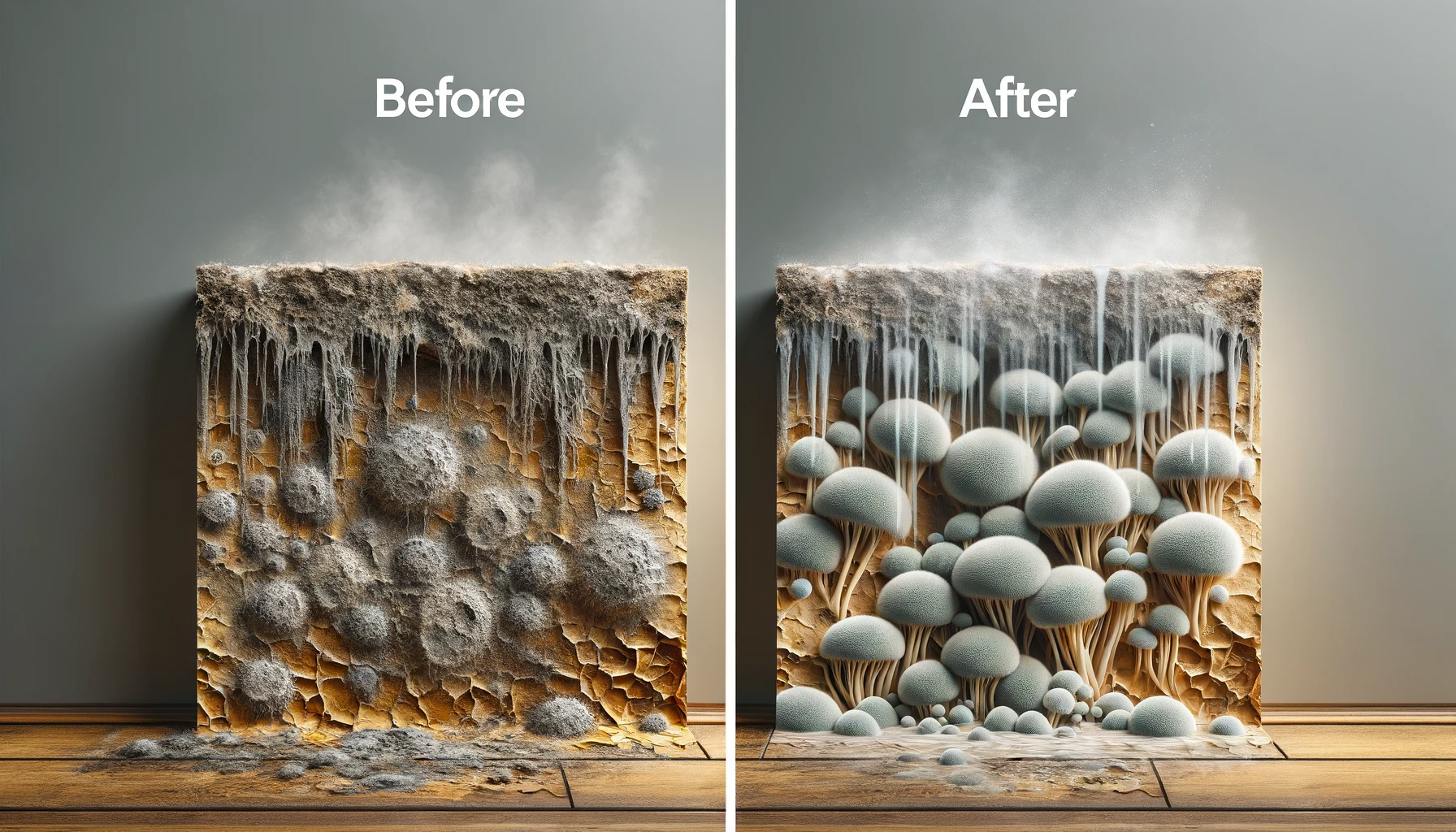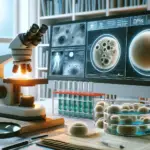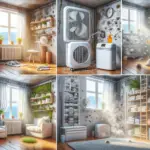Have you ever wondered if mold dies when it is dry? This common inquiry often arises during a mold infestation. Even when mold is in a state of seemingly-inactive dry mold spores, there’s still an active risk of airborne spores and potential allergic reactions if disturbed. This means that even dried-out mold can reactivate given the right conditions, making it important to treat any forms of visible or invisible mold as soon as possible to prevent further growth.
Contrary to what some may think, mold does not die when it dries. Mold is a living organism that requires water and nourishment to survive. Even in its dormant form as dry spores, they can stay inactive for a long period until the right conditions come where moisture becomes present once again – at which point the mold will re-activate and begin growing again.
Not only are mold and mildew destructive to your home, but they can also adversely affect your health. Studies have demonstrated that people react differently when exposed to mold spores; however, the effects vary from minor allergies to severe illnesses. Mold exposure has even been linked with toxigenic reactions in some cases.
Additionally, it is essential to acquire knowledge about mold and everything related to it to understand the issue at hand and take appropriate action when necessary.
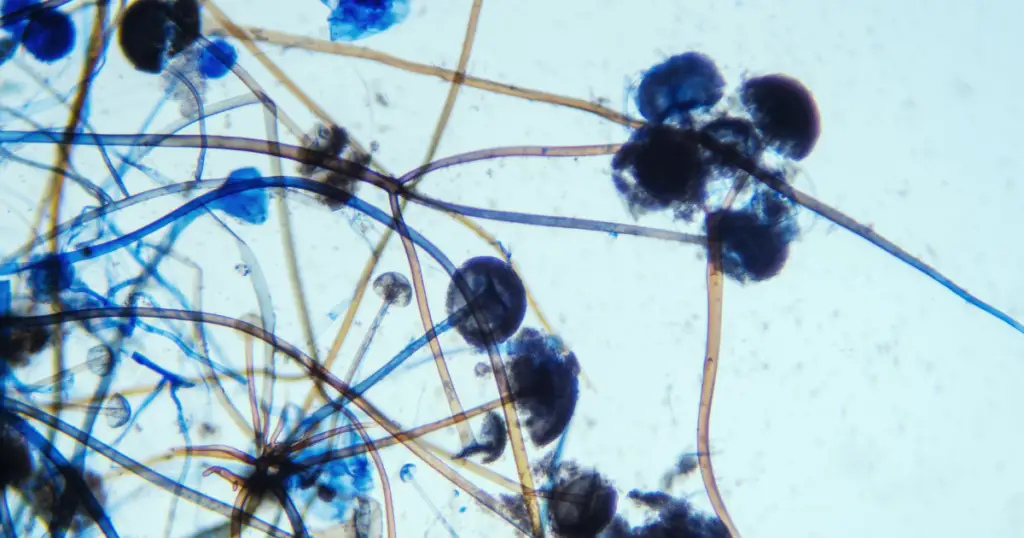
What are Mold Spores?
Mold spores are microscopic particles released by active mold growth which can cause serious health problems if inhaled. Mycotoxins produced by certain types of molds can cause allergic reactions and other respiratory issues.
While mold requires moisture to grow, relative humidity (RH) is not the only factor as organic materials must also be present for mold to thrive. Controlling RH reduces the risk of an active mold problem, and regular cleaning and inspection can help ensure your home remains free of potentially hazardous mold spores.
What causes Mold Growth?
Mold growth is caused by high moisture levels, organic materials, and spores. Moisture can come from the ground or the air, while organic materials provide the nutrients needed for mold to thrive. Additionally, pieces of debris such as leaves or paper make an ideal breeding ground for mold spores.
To prevent mold growth in your home, it is important to inspect your home regularly for damp areas and water leaks. Additionally, you should use dehumidifiers in areas prone to high humidity and replace any damaged insulation or roof tiles that can allow moisture into the home.
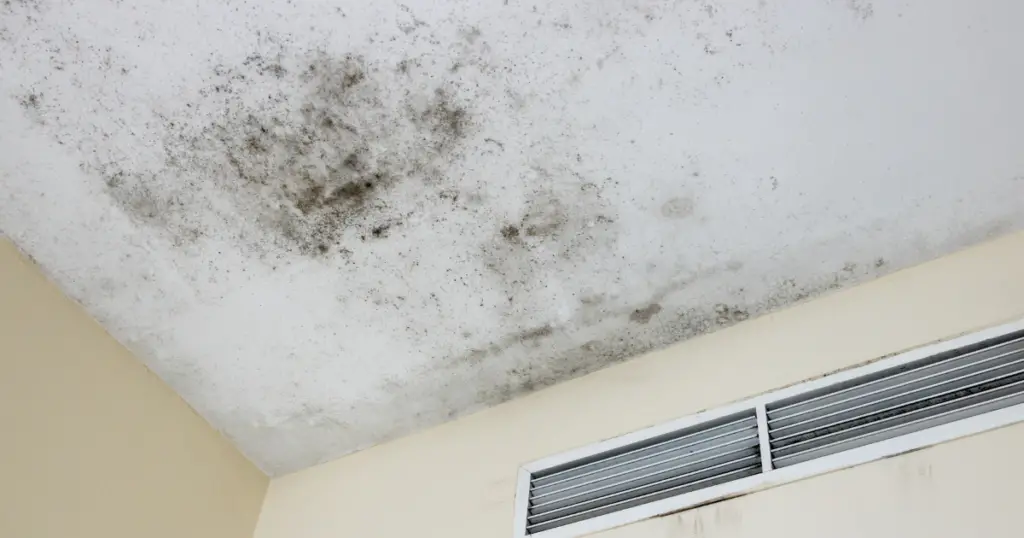
How do Mold Spores get in my house?
Mold spores are microscopic and can enter your home undetected by the naked eye. They travel through open windows, and doors, on pets and clothing, or even through your HVAC system. For mold to take root and form a problem indoors, there must be organic material present in your home such as wood, fabric or paper for it to thrive on.
Additionally, indoor humidity levels play an important role; if the relative humidity is too high then common conditions become favorable for mold growth. Controlling indoor humidity and keeping your home clean are two of the most effective means of preventing a potential mold problem from forming.
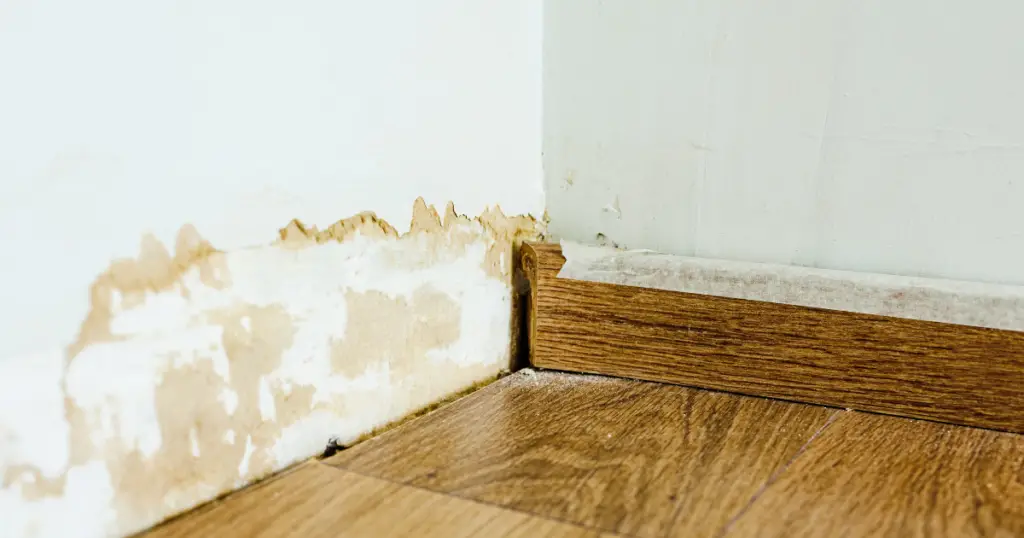
Do Molds Produce Allergens?
Yes, molds can produce allergens that can cause uncomfortable symptoms such as itchy eyes, runny nose, sneezing and respiratory illness in some people. The most common indoor molds are Aspergillus, Cladosporium, and Penicillium.
If present in your home, these molds will release their spores into the air when disturbed – exposing your family to the potential health risks they pose. If mold is discovered in your home it should be removed immediately with the assistance of a certified mold remediation specialist to reduce the likelihood of suffering from any adverse health effects that may happen to mold exposure.
How long does it take for mold spores to die?
It is not possible to determine how long it takes for spores to die because it depends on the environmental conditions. If a mold-infested area is left unmitigated, then the spores can survive for an indefinite amount of time until they find a source of moisture and organic material to feed on.
Mold spores can survive without moisture for long periods, however, their survival rate is much lower when exposed to dry environments. In many cases, the mold will go dormant and remain inactive until environmental conditions come where moisture becomes present once again – at which point the mold will re-activate and begin growing again.

Can mold grow if there is no air?
No, mold cannot grow in an environment with no air. Without oxygen, some molds become dormant. Mold needs moisture, warmth and air to thrive and form colonies.
Dry conditions that eliminate oxygen are typically too hostile for mold to survive, so mold spores will remain inactive until better conditions arise. Again, if moisture becomes present the spores can re-activate their growth and cause a mold problem.
Does mold die without moisture?
Moisture is the essential factor for any mold growth, and without it, the spores simply go inactive. Keep in mind though that they never truly die – when water returns to their environment, these dormant spores can be revitalized again even after many years of dormancy depending on the type of fungus present.
To completely prevent mold from growing in your home, it is not enough to just reduce humidity. It is important to also remove any spores and materials that have been contaminated by the mold. With this in mind, keeping relative humidity levels low and halting potential sources of moisture are essential steps toward eliminating or minimizing active issues with mold.

Is dry mold spores harmful?
When mold dries out, its spores enter a dormant state and may seem innocuous; however, it can still trigger allergies and lead to health issues.
Contrary to common belief, you don’t need physical contact with the fungus for it to affect your well being – even inactive mold particles in the air can cause symptoms like watery eyes, sneezing/coughing fits and skin rashes. Because spores are so tiny, they can easily get inhaled and lead to health problems even without any direct contact.
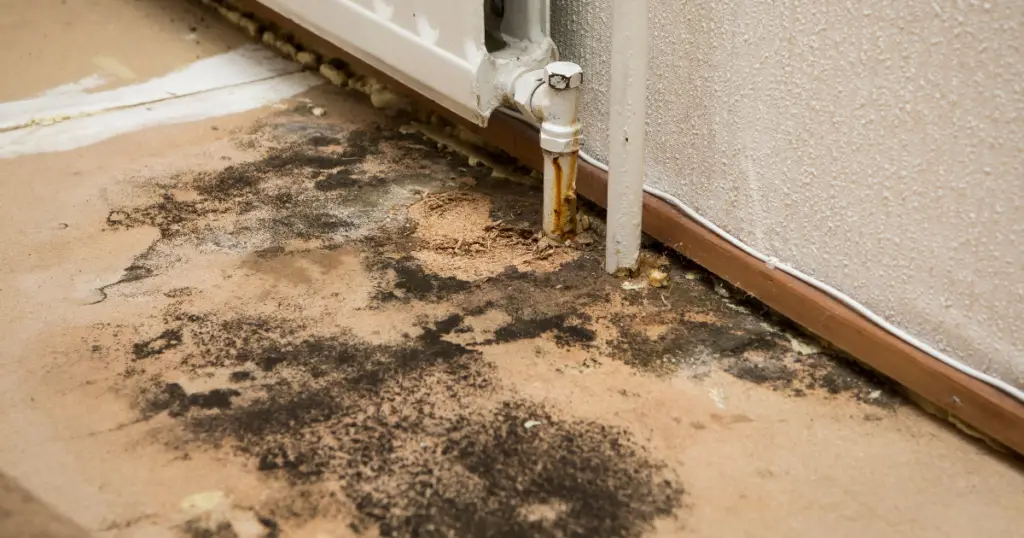
Can I get rid of mold spores?
Mold spores are everywhere and cannot be completely removed from your home. The best way to prevent mold is by keeping areas clean and dry, reducing humidity levels, and repairing any water damage immediately.
Cleaning up after a mold problem will help reduce the number of spores present in your home, but the key is preventing new outbreaks with proper maintenance. Investing in air purifiers, dehumidifiers, and other humidity reducing solutions can help keep your home free of spores.
A certified mold remediation specialist can also provide comprehensive services to help you rid your home of any existing issues with mold. They will take preventative steps such as sealing off contaminated areas, using fans to dry the area, and applying antimicrobial treatments to kill off any remaining spores.
It is important to keep in mind that even after the mold removal process, some spores may still exist in your home, so it’s essential to properly maintain moisture levels and continue regular cleaning practices. Doing this can help reduce the risk of a new outbreak and minimize health issues related to mold exposure.
Can Mold disappear on its own?
No, mold will not disappear on its own without any intervention. While some molds may become dormant and remain inactive in dryer areas, they can quickly re-activate once moisture becomes available again.
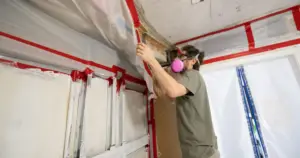
Need help with Mold Removal? Here are some essential tips to keep in mind!
- Eliminate Moisture: Control moisture levels in your home or business to avoid mold from growing and contamination. Use exhaust fans, ventilation systems, and dehumidifiers to reduce humidity levels.
- Check for Mold in Your Home: Inspect areas prone to moisture buildup such as basements, attics, and bathrooms for signs of mold growth. Pay attention to any damaged materials and air ducts as well.
- Improve Air Quality: Ensure that the air in your home or business is clean by removing mold spores through surface cleaning and disinfection.
- Monitor Moisture Levels: Regularly check for moisture issues such as condensation buildup inside walls or beneath cabinets, use a hygrometer to measure humidity levels indoors, and inspect plumbing fixtures for leaks.
- Remediate Water Damaged Materials: If there are any damaged materials present in your home or business, it is important to have them removed promptly before they become a breeding ground for mold spores.
- Clean Air Ducts: Ensure that the they are free from dust and debris so that clean air can flow freely through them without containing any contaminants that could cause health problems if breathed in.
- Install Exhaust Fans: Installing exhaust fans in especially moist or damp areas of the house can help keep the indoor air fresh by helping circulate the air out of the room more quickly throughout the day.
- Remove Mold From Contaminated Surfaces: Use specialized cleaners and fungicides to remove existing mold from contaminated surfaces, paying special attention to hard-to-reach places like cracks and crevices where spores may have accumulated over time due to poor ventilation or high humidity levels within a given area.
- Dispose Of Contaminated Materials Immediately: Once you have identified an area with significant mold contamination, it is important to dispose of all contaminated materials promptly so that they cannot spread further throughout the building’s structure or into other living spaces/rooms within the property itself.
Ultimately, dry, dormant or inactive mold can still be a cause of serious health concerns. To safeguard your home, be sure to inspect it regularly. In the event of mold infestation, it is recommended that you contact a certified professional who can quickly and accurately identify and take appropriate action.
[/et_pb_text][/et_pb_column][/et_pb_row][/et_pb_section]

